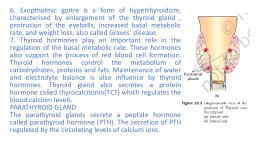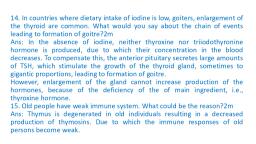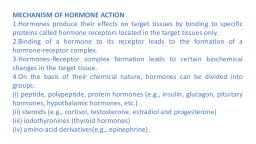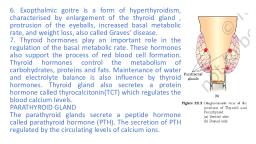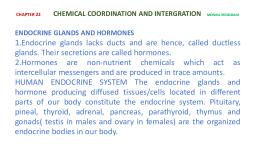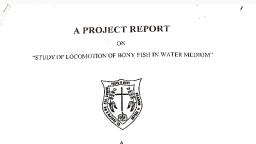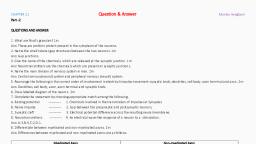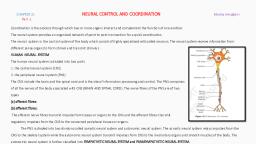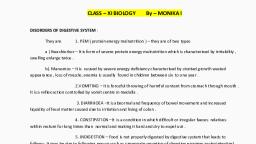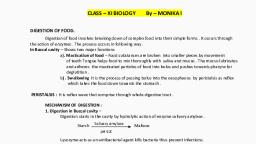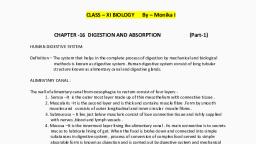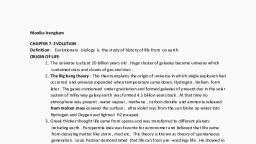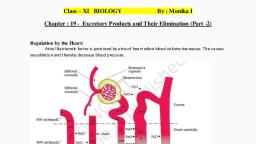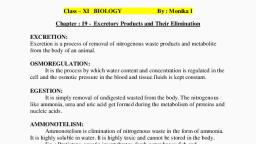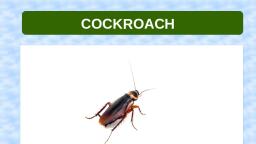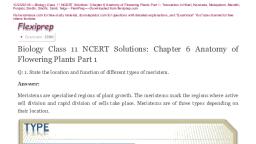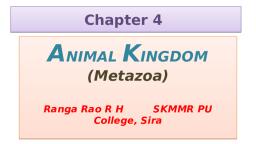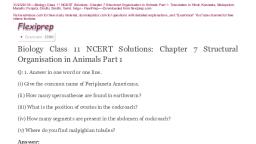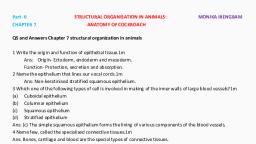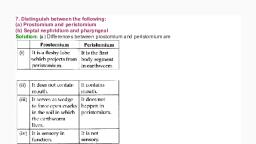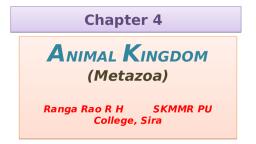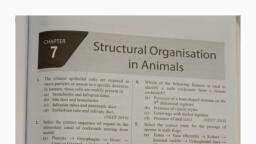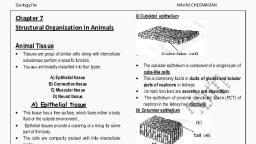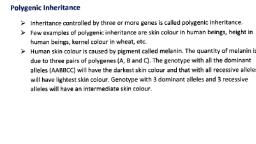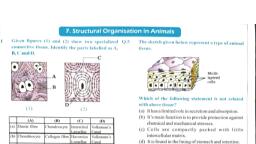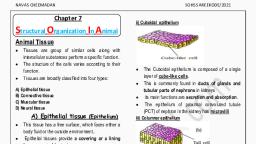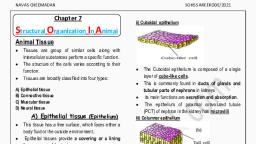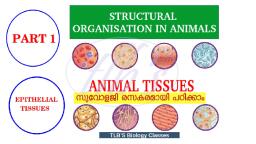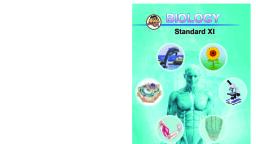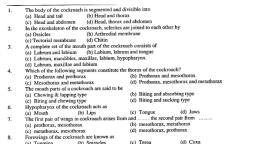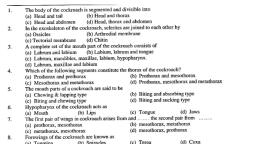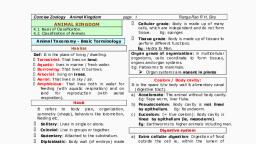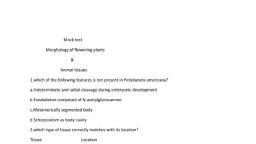Page 1 :
Part-5, CHAPTER 7, , STRUCTURAL ORGANISATION IN ANIMALS, ANATOMY OF COCKROACH, , MONIKA IRENGBAM, , 7.4: Cockroach:, They are brown or black bodied organisms of Class Insecta in Phylum Arthropoda., In tropical regions brightly coloured cockroaches of red, yellow and green colour have been reported., They measure 0.76 cm in length., They have long antenna, legs and a flat extension of the upper body wall that conceals their head., They are nocturnal omnivores., They live in damp places., They infest homes and are vectors of various diseases., 7.4.1: Morphology, The most widespread species of cockroach is Periplaneta americana., , , , , They are 33 – 54 mm long., In males the wings are seen to extend beyond the abdomen., Their body is segmented with three distinct regions: head, thorax and abdomen., , , , , An exoskeleton covers the entire body. It is hard and made up of chitin., Sclerites: Hardened plates of exoskeleton in each segment that are joined to each other by thin and, flexible articular membrane., Arthrodial membrane: The thin and, flexible membrane that joins the sclerites of, each segment., Tergites:, Sclerites, present, dorsally, , , , , , , , , , , , Sternites: Sclerites present ventrally., Head:, Triangular in shape and lies anterior at right, angles to the longitudinal body axis., Formed by the fusion of six segments., Shows great mobility in all directions due to, a flexible neck, The head capsule bears a pair of compound eyes, Antennae arise from membranous sockets that lie in the front of the eyes., , Antennae have sensory receptors that sense the changes in the environment., Anterior end of the head bears mouth parts that have appendages specialised for biting and chewing., The mouthparts consisting of a labrum (upper lip), a pair of mandibles, a pair of maxillae and a labium, (lower lip). A median flexible lobe, acting as tongue (hypopharynx), lies within the cavity enclosed by, the mouthparts., Thorax:, Consists of three parts - prothorax, mesothorax and metathorax., The head is connected to the thorax by the neck., The neck is a short extension of the prothorax., Each thoracic segment bears a pair of walking legs, Two pairs of wings are present.
Page 2 :
The first pair arises from mesothorax and the second pair arises from the metathorax., Tegmina: The forewings or the mesothoracic wings of the cockroach. They are opaque, dark, and leathery. They cover the hind wings when at rest., , , , Hind wings: They are the metathoracic wings. They are transparent, membranous and are, used in flight., Abdomen:, Consists of 10 segments., Females: 7th sternum is boat shaped, 7th, 8th,and 9th sterna together form a brood, or genital pouch, The female gonopore, spermathecal, pores and collateral glands are present in, the anterior, part of the brood., Males: genital pouch or chamber is, present at the hind end of abdomen. 9th and, , 10th terga bind the genital pouch dorsally. The genital pouch is bound ventrally by the 9th sternum., The dorsal part contains the anus. The male genital pore is ventral . The pouch also contains the, gonapophysis., A pair of short, threadlike anal styles are present in males. They are absent in females., Anal cerci: A pair of jointed filamentous structures borne on the 10th segment of both males and females., 7.4.2: Anatomy, Alimentary Canal/Digestive System:, , , , , , , , , Alimentary canal consists of three parts: foregut, midgut and hind gut., Foregut: It includes the following parts:, Mouth: It opens into a short tubular pharynx., Pharynx: It leads to the narrow tubular oesophagus., Oesophagus: A small tubular structure that opens into a sac like structure called as the crop., Crop Asac-like structure at the end of oesophagus. It is used for storing food., The crop is followed by gizzard or proventriculus. It has an outer layer of thick circular muscles and thick, inner cuticle forming six highly chitinous plate called, teeth. Gizzard helps in grinding the food particles., , The entire foregut is lined by cuticle., Midgut: It consists of 6-8 blind tubules called hepatic, or gastric caecae. It is present at thejunction of foregut, and midgut. It secretes digestive juice., Malpighian tubules: A ring of 100 -150 yellow, coloured thin filamentous tubules present at the, junction of midgut and hindgut. They help in the, removal of excretory products from the haemolymph., Haemolymph: It is a fluid, analogous to the blood in, vertebrates that ci rculates in the interior of the, Alimentary canal of cockroach
Page 3 :
arthropod body remaining in direct contact with the animal's tissues. It is composed of a fluid plasma in, which hemolymph cells called hemocytes are suspended., Hindgut: It is broader than midgut. It is differentiated into ileum, colon and rectum. The rectum opens, out through anus., • Blood Vascular System/Circulatory System:, Cockroach shows the presence of an open circulatory system., Poorly developed blood vessels that open into central cavity, called as the haemocoel., Visceral organs are present in the haemocoel. They are, surrounded by and are in direct contact with the haemolymph., The haemolymph is colourless. It consists of plasma and, haemocytes. Both plasma and haemocytes are colourless., Heart : It is made up of an elongated muscular tube that lies, along mid dorsal line of thorax and abdomen. It is consists of 13, funnel shaped chambers. Ostia are present on either side., Blood enter heart through ostia from sinuses. It is then pumped, out anteriorly to sinuses again., Ostia: A pair of slit like openings that are present in each, chamber of heart at the posterior end. It allows the entry of blood into the heart, Respiratory System:, It is a network of tubes like trachea that ends at 10 pairs of small holes called spiracles. These spiracles, are present laterally., Spiracles: Spiracles are external openings of the respiratory system seen in some animal species.They, are found in insects, spiders and some species of fish and whales. The function of spiracles is to help, oxygen to reach internal respiratory organs. The internal respiratory organs vary with animals, such as, lungs in whales and tracheae in insects., Tracheoles: Thin branching tubes of trachea that carry oxygen from the air to all parts of the body., Exchange of gases takes place through diffusion., Sphincters: Muscle- like tissues that control the opening of spiracles., Excretory System:, Excretion is performed by Malpighian tubules., Each tubule is lined by glandular and ciliated cells., They absorb nitrogenous waste products and convert them into uric acid which is excreted through out, the hindgut. Therefore, this insect is called uricotelic., The fat body, nephrocytes and urecose glands also support the Malpighian tubules inexcretion., Nervous System:, It consists of a series of ganglia. These ganglia are fused and arranged segmentally. They are joined by, paired longitudinal connectives on the ventral side., Three ganglia are present in the thorax. Six ganglia are present in the abdomen., The nervous system of cockroach is spread out in the entire body., The nervous system is divided between the head and the ventral (belly side) part of its body., Therefore, if the head of a cockroach is cut off, it will still live for as long as one week.
Page 4 :
The brain is present in the head region and is represented by supra-oesophageal ganglion which supplies, nerves to antennae and compound eyes., Supra-oesophageal ganglion:, The sense organs : Antennae, eyes, maxillary palps, labial palps, anal cerci, etc., Compound eyes: Present at the dorsal surface of the head. Each eye is made up of about 2000 hexagonal, ommatidia (sing.: ommatidium)., These ommatidia help a cockroach to receive several images of an object. This kind of vision is known, as mosaic vision. It has increased sensitivity but less resolution. It is sensitive during night. Therefore, it, is called as nocturnal vision, Ommatidia: Units comprising the compound eyes of arthropods like insects, crustaceans and millipedes., (Singular : ommatidium). Each ommatidium consist s of a cluster of photoreceptor cells that are, surrounded by support cells and pigment cells. The outer part of the ommatidium is covered by a, transparent cornea., • Reproduction:, Cockroaches are dioecious., Both sexes have well developed reproductive organs., , , , , , , , , Male Reproductive System:, It consists of a pair of testes one lying in each lateral side between the 4th -6th abdominal segment., Vas deferens arises through each testis., Vas deferens opens into the ejaculatory duct through the seminal vesicles., The ejaculatory duct opens to the male gonopore., Gonopore: It is the opening of the ejaculatory duct in males. It is located ventral to anus., Accessory reproductive gland: Characteristic mushroom shaped gland present in the 6th- 7th abdominal, , , , , , , , , , , segments., The external genitalia are represented by male gonapophysis or phallomere, Phallomere: These are chitinous asymmetrical structures surrounding the male gonopore., The sperms are glued together in the form of bundles and are stored in the seminal vesicles ., These bundles are called spermatophores. They are discharged during copulation., Spermatophores: Bundles of sperms sticking together and released during ejaculation., Female Reproductive System:, It consists of 2 large ovaries lying laterally in the 2nd - 6th abdominal segments., Each ovary consists of a group of eight ovarian tubules. These ovarian tubules are called ovarioles. Each, , , , , , , , , ovariole consists of a chain of developing ova., Oviducts of each ovary come togetherto form single median oviduct. It is also called as the vagina. It, opens into the genital chamber. A pair of spermathecal opens into the genital chamber. It is present in, the 6th segment., Spermatheca: a sac for storing sperms in the female reproductive tract present in various lower animals,, especially insects., Sperms are transported as spermatophores., Fertilised eggs are enclosed in capsules called as oothecae., Ootheca: It is a large dark reddish to blackish brown capsule about 8mm long. They are laid or attached, to a suitable surface. The surface should be near a food source and have relative high humidity., , On an average 9 -10 oothecae are produced by females. Each ootheca contains around 14 -16 eggs.
Page 5 :
The development of eggs is paurometabolous, Parametabolous development: It is a form of incomplete metamorphosis where the development, involves a nymph stage., Nymph: It is a stage in the incomplete metamorphosis of certain insects where the immature form, resembles the adult in appearance but is smaller in size. The nymph grows by moulting to reach adult, stage. The nymph stage just before the adult stage has wing pads but only adults have wings., Most cockroaches are wild and have no economic importance., Some are pests and destroy and contaminate food., They are also vectors of various bacterial diseases., , Male reproductive system of cockroach, , ( **************************)
